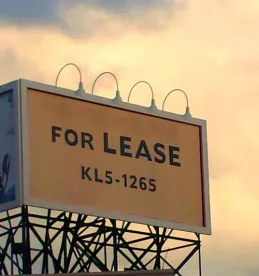WildEarth Guardians v. United States Bureau of Land Management, et al., 870 F.3d 1222 (10th Cir. 2017). WildEarth Guardians and the Sierra Club (collectively, “Plaintiffs”) brought a claim under the Administrative Procedure Act (the “Act”) against the Bureau of Land Management’s (BLM), challenging the BLM’s decision to grant four coal leases in Wyoming’s Powder River Basin. The basin accounts for almost 40 percent of the United States’ total coal production, and the subject leases would extend the life of two mines that provide almost 20 percent of the United States’ annual domestic coal production. Id. at 1227. Plaintiffs alleged the BLM’s determination that the leases would not have a significant effect on national carbon dioxide emissions, as compared to the “No Action” alternative, was arbitrary and capricious because (1) it was not supported by the administrative record and (2) the BLM failed to acquire information “essential to a reasoned choice among alternatives.” Id. at 1233–34. The Tenth Circuit agreed the decision was not supported by the record and remanded to the district court with instructions to enter an order requiring the BLM to revise its Environmental Impact Statement (EIS) and Records of Decision, but refused to vacate the leases themselves. Id. at 1240.
The BLM approves mining infrastructure and issues mining leases within much of the Powder River Basin area. Id. at 1227. In its EIS and, later, in its Records of Decision for each of the leases, the BLM concluded that there would be no appreciable difference in the United States’ total carbon dioxide emissions under its preferred action—granting the leases—as opposed to a “No Action” alternative in which none of the leases would be issued. Id. at 1227–29. The BLM’s conclusion relied upon the assumption there would be no decrease in U.S. coal consumption because third party sources would be able to supply the market with the same amount of coal when compared to what would be mined under the leases. Id. at 1228–29.
Under the Act, an agency’s decision is unlawful if its actions, findings, or conclusions are arbitrary and capricious. Id. at 1233. A decision is arbitrary and capricious if it (1) fails to consider an important aspect of the problem; (2) contradicts the evidence before the agency or is so implausible that it cannot be attributed to a difference of opinion; (3) is not based upon consideration of the relevant factors; or (4) is a clear error in judgment. Id. The Tenth Circuit noted that this deferential standard focuses on the decision-making process. Furthermore, the National Environmental Policy Act requires agencies to “take a ‘hard look’ at the environmental effects of the alternatives before it.” Id. (quoting All Indian Pueblo Council v. United States, 975 F.2d 1437, 1445 (10th Cir. 1992)). Thus, while an agency may select a more environmentally harmful alternative, its reasons for doing so must be rational and disclosed. Id.
The Tenth Circuit agreed that the BLM’s assumption that there would be no change in coal consumption because coal supplied by other sources would meet market demand without any increase in price was not supported by evidence in the administrative record. In so holding, the Tenth Circuit noted that the BLM provided no citation indicating that the coal deficit under the “No Action” alternative (some 320 million tons per year) could be filled from elsewhere or at a comparable price. Id. at 1234. The BLM made no reference to available stores of coal, rates at which such coal could be extracted, or whether any price differential might affect substitutability. Id. Furthermore, the Tenth Circuit agreed that the assumption was contradicted by the very resources upon which the BLM relied to support its decision. Id. Specifically, the BLM cited the Energy Information Administration’s 2008 Energy Outlook prediction that coal production would continue to increase, but ignored the portion of that document that found that higher coal prices drive down coal consumption in favor of alternative energy. Id. at 1234–35. While the BLM argued that an overall increase in demand for electricity would override any potential decrease in demand for coal to due to price increases, it cited no evidence to support such conclusion. Id. at 1235. The Tenth Circuit noted that the BLM’s assumption “falls below the required level of data necessary to reasonably bolster the [BLM’s] choice of alternatives.” Id.
The Tenth Circuit also held that the BLM’s decision was arbitrary and capricious because the perfect substitution argument was irrational. Id. at 1236. Noting that the Tenth Circuit had not previously addressed when an assumption made by an agency in its EIS violates the “rule of reason,” rendering the analysis unenforceable, the court drew upon the rule articulated by the Supreme Court in Baltimore Gas & Electric Co. v. NRDC, 462 U.S. 87 (1983). The Supreme Court looked to three factors to determine whether an assumption used by the Nuclear Regulatory Commission to conclude that permanent nuclear waste storage would not have a significant environmental impact was arbitrary and capricious: (1) whether the assumption had a limited purpose in the overall analysis; (2) whether the agency’s estimation of the environmental effects was overstated; and (3) whether the agency’s decision was based on special expertise, rather than simple findings of fact. Id. (citing Baltimore Gas & Electric Co., 462 U.S. at 102–04). Here, the BLM’s assumption was key to its decision, overstated, and not based upon special knowledge “on the frontiers of science.”
The Tenth Circuit remanded the case to the district court with instructions to enter an order requiring the BLM to revise its EIS and Reasons of Decision. The Tenth Circuit declined to vacate the leases, recognizing that Plaintiffs’ appeal focused on a fairly narrow issue and there was insufficient evidence before the Tenth Circuit to determine what would happen to the leases if the lease tracts were enjoined. Id. at 1240.




 />i
/>i

